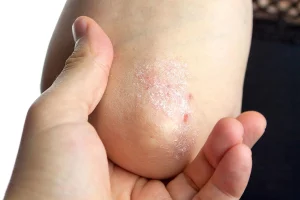Science these days.
The FDA is currently considering approving the use of a technique that would utilize and incorporate the DNA of three different people when creating an embryo for implantation via in vitro fertilization. The push for approval of this technique is to allow women to be able to have children without passing on diseases of the mitochondria, such as muscular dystrophy and respiratory issues, which are passed down from mother to child through mitochondrial DNA. Since diseases linked to mitochondrial DNA can only be passed on by the mother, preventing such transmission by using this procedure would involve removing the mother’s DNA from an egg and be transferring it into a donor’s egg that has had its own genetic material removed. Some of the donor’s DNA would still make it in alongside the mother and father’s DNA, thus creating a baby made from three individuals rather than your conventional two.
Proponents of the technique are quick to stress that there is no genetic modification happening in the procedure. While this may be the case (we suspect you need a PhD in genetics to be able to fully understand exactly what’s going in the process), some people fear that using this technique would take us down a very slippery slope and open up the door to tinkering with other factors in the creation of babies.
The technique was developed by the New York Stem Cell Foundation, and the organization’s director Susan Solomon has said:
“There is no genetic engineering. It isn’t a slippery slope. It’s a way to allow these families to have healthy children…. What we’re doing is, without at all changing the DNA of the mother, just allowing it to grow in an environment that isn’t sick.”
She expressed that the last thing that she would want “…is for the New York Stem Cell Foundation to be involved in anything like designer babies.”
The technique has already been approved in Britain and three-DNA babies could be born as soon as 2015, in an effort to reduce the current statistics of one out of every 200 babies being born with a mitochondrial disease. If all goes well this could be a game changer in controlling one aspect of the public’s health.
It’s not without complications, however, the emotional kind ranking high on that particular list. The host-embryo donor will be kept private and the children who borrowed their DNA will not have the rights to seek them out later. If that child were told the particulars about the procedure and the way they were conceived, they might have the same curiosity about their heritage as children who are privately adopted. We’re sure Lifetime already has a movie script in the works about how that scenario would unfold.
Although the New York Stem Cell Foundation is adamant that pursuing this procedure wouldn’t open the door to genetic modifications, you can imagine the interest that same-sex and other couples might show in the technological advances in bay that three-DNA babies represent.
Ethical, emotional and health concerns aside, the procedure, if approved, would allow many families to bring healthy babies into the world without having to worry about the diseased genetics they might pass on. Slippery slope or not, that’s a good thing.

















